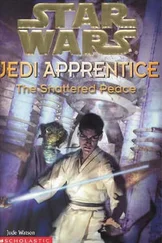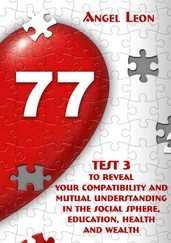Roger Allen - The Shattered Sphere
Здесь есть возможность читать онлайн «Roger Allen - The Shattered Sphere» весь текст электронной книги совершенно бесплатно (целиком полную версию без сокращений). В некоторых случаях можно слушать аудио, скачать через торрент в формате fb2 и присутствует краткое содержание. Год выпуска: 1994, ISBN: 1994, Издательство: Tor Books, Жанр: Фантастика и фэнтези, на английском языке. Описание произведения, (предисловие) а так же отзывы посетителей доступны на портале библиотеки ЛибКат.
- Название:The Shattered Sphere
- Автор:
- Издательство:Tor Books
- Жанр:
- Год:1994
- ISBN:0-312-85734-9
- Рейтинг книги:5 / 5. Голосов: 1
-
Избранное:Добавить в избранное
- Отзывы:
-
Ваша оценка:
- 100
- 1
- 2
- 3
- 4
- 5
The Shattered Sphere: краткое содержание, описание и аннотация
Предлагаем к чтению аннотацию, описание, краткое содержание или предисловие (зависит от того, что написал сам автор книги «The Shattered Sphere»). Если вы не нашли необходимую информацию о книге — напишите в комментариях, мы постараемся отыскать её.
.
Humans face two enemies—the implacably powerful Charonians who kidnapped the Earth, and the mysterious Adversary, before whom the Charonians quake in fear. Can an unlikely combination of scientists, corpses, dictators, and professional troublemakers withstand both threats and return the Earth to its proper place in the Solar System?
The Shattered Sphere — читать онлайн бесплатно полную книгу (весь текст) целиком
Ниже представлен текст книги, разбитый по страницам. Система сохранения места последней прочитанной страницы, позволяет с удобством читать онлайн бесплатно книгу «The Shattered Sphere», без необходимости каждый раз заново искать на чём Вы остановились. Поставьте закладку, и сможете в любой момент перейти на страницу, на которой закончили чтение.
Интервал:
Закладка:
And if one thing was certain about the Charonians, it was that they had not always been what they were now. Sometime, somehow in the past, creatures had built starships, filled them with the lifecode, the DNA equivalent, of the life from the home world and sent the starships out into space. But the starships had the ability to modify their cargo of living beings, and they had taken over. Life served machinery instead of machinery serving life, until the two merged into one. The end result of that was the strange complex webs of interdependent beings that humans called Charonians.
Coming into the Universe tends to leave some scars. Humans had belly buttons. Sianna was very close to certain she knew what Charonians had.
“Think like a Charonian,” Sianna said, going over to where Wally was working. “You’ve got the whole Solar System for raw materials, and you want to build a Dyson Sphere. How would you go about doing it?”
Wally looked thoughtful. “What sort of assumptions do I make?”
“No assumptions. Just aim for the end result of a Sphere like the one here. Just do your best guess,” Sianna said.
“But what about—”
“Just make it up as you go along,” Sianna said. She didn’t want to say as much to Wally, but she was relying more on his hunches and guesses and instincts than the results of deliberate thought. Sometimes, when he tried too hard, Wally thought like a regular person. Sianna was half-hoping that the way he looked at the world when he worked at his own level would be closer to the Charonian viewpoint. Not that she could say any of that , of course. “You’ve been doing these sims right along. Do it by feel. Take the tools that make the most sense to you.”
“Okay, then,” Wally said, leaning back in his chair. “I have a lot of stuff in the data library, and a bunch of ideas I never had a chance to try out. You understand I’ll have to do a lot of guessing. We don’t know how the Charonians do a lot of things.”
“Like what?”
“Ah, well, for starters, they must have some way to do easy, efficient, straightforward matter transmutation. That’s the big thing,” he said. “Hydrogen and helium make up something like ninety percent of the Solar System. They’d have to be able to turn hydrogen and helium into other elements. We’ll just have to do a black box on that. Let’s see. We’ll need some Charonian forms we haven’t seen yet. Sphere constructors, transporters, energy collectors. Probably some sort of interim structures along the way…” Wally kept talking, but his voice got lower and less distinct until he was just muttering to himself, and Sianna could not follow it. But he was caught up in the spirit of the thing, and that was all that mattered. Once Wally got his teeth into a problem, he did not let it go.
Suddenly the interior of the Sim Center chamber began to shift and change, slowly at first, but then with greater and greater violence. The darkened room flared into glaring light. The images of the planets turned ghostly pale, then transformed into ghostly white wire balls, mere schematics rather than true images. Wally was conserving processing power, doing bare-bones imaging while he set up. Then the wire balls began to shift position, zipping and flashing across the darkened sky as Wally brought the setup to where he wanted it. Sianna found herself ducking, a bit too late, as the wireframe image of Jupiter skimmed across the room—and right through her.
“Okay,” Wally said, clearly talking to himself, “we’ll need places to store and process raw materials, and, ah, transmuters, and transporters, and oh, let’s see…” His voice started to take on a strange enthusiasm, and an odd little gleam came into his eye. Sianna had asked him to play God, and it was obvious he liked the idea.
Strange shapes, changing and evolving, appeared in the air around Sianna, and then vanished before they completed themselves. Wally was trying out ideas, scenarios, procedures half in his head and half in the sim chamber. It was all most disconcerting.
But then quite suddenly, it all stopped, and the room dropped into total darkness. “Okay,” Wally’s voice announced from the midst of the utter blackness. “I think I have it. At least a first-draft idea, anyway. Here we go.”
The room remained in darkness for a moment. Then the planets reappeared, moving fast enough that even Saturn’s motion was visible. Sianna checked the time display—Wally had gone back to the moment the Lunar Wheel had awakened, and was running the system at a year every thirty seconds. At that speed, the individual Charonians were barely visible, little more than a hazy cloud about each of the planets. But Sianna could see the results of their handiwork quite plainly.
The planets were coming apart at the seams, dissolving before her eyes as the Charonians tore up the worlds and hurled their component matter out into free space. The Lunar Wheel, hidden deep inside the Moon, commanded the operation, sending out stabbing bolts of gravity power for the other Charonian forms to absorb. The time display rolled forward at a frantic pace, quickly sweeping past the time when the Solar System had managed to stop the Charonians—or at least the moment where everyone hoped they had been stopped.
The pace of destruction accelerated as more and more Charonians poured through the wormhole links. The smaller and then the larger satellites of the gas giants evaporated. Mars was the first planet to go, shredded away until its component mass was nothing but a cloud of dust and rubble. One by one, the rest of the worlds of the Solar System followed suit, ground down to nothing. At last, even Jupiter wasn’t there anymore, the king of the planets reduced to a cloud of gas and dust. All the worlds were gone. All but the Moon. All but the Moon— the Moon, where the Lunar Wheel lived .
“Okay,” Wally said. “From here on in it’s all totally hypothetical. We know that once the Landers were on the ground, they came together, kinda merged into larger Amalgam Creatures. I figure the Charonians would just keep going with that idea. Once the worlds are torn up, the Amalgams would merge together and form black box monsters.”
“Black box monsters?”
“Huh? Oh, you haven’t hung out in the theory bull sessions, I guess. Well, the things would be huge—maybe a hundred, two, three hundred kilometers across. That’s what I call a monster. And a black box—you know, a machine where you know what it does but not how it does it. If the Charonians want to use the debris fields that used to be the planets, they have to be able to collect that matter, transmute it into whatever elements and materials they will need, and then form those up into, ah, well, call ’em Sphere modules. Sections of the Sphere’s skin, structural support, that sort of thing. Anyway, I’ve just sorta guessed at what the BBMs for a given job would look like. Here, I’ll do an enlargement on a cluster of them. Lemme slow down the time rate and zoom in a bit so you can see what’s going on.”
A cluster of tiny dots near Mars’ old orbit suddenly started to grow, swelling up until they filled half the sim chamber. The BBMs were huge, complex, malevolent-looking things. They looked like clusters of pyramidical Amalgam Creatures stuck together into various shapes.
One of them was sucking in matter from the surrounding debris field—debris that had once been Mars—and extruding it in the form of long, flattened sheets. No doubt, at least in this simulation, those sheets would one day be the outer skin of the Solar System Dyson Sphere.
Sianna felt that knot in her stomach again. Suppose they had all talked themselves into the notion that their kith and kin back home were still alive? Suppose what she was seeing here was what was really happening back there?
Читать дальшеИнтервал:
Закладка:
Похожие книги на «The Shattered Sphere»
Представляем Вашему вниманию похожие книги на «The Shattered Sphere» списком для выбора. Мы отобрали схожую по названию и смыслу литературу в надежде предоставить читателям больше вариантов отыскать новые, интересные, ещё непрочитанные произведения.
Обсуждение, отзывы о книге «The Shattered Sphere» и просто собственные мнения читателей. Оставьте ваши комментарии, напишите, что Вы думаете о произведении, его смысле или главных героях. Укажите что конкретно понравилось, а что нет, и почему Вы так считаете.









![Ширли Мерфи - The Shattered Stone [calibre]](/books/436059/shirli-merfi-the-shattered-stone-calibre-thumb.webp)


